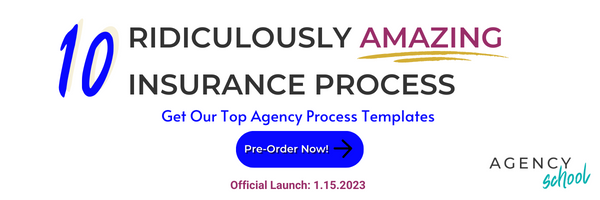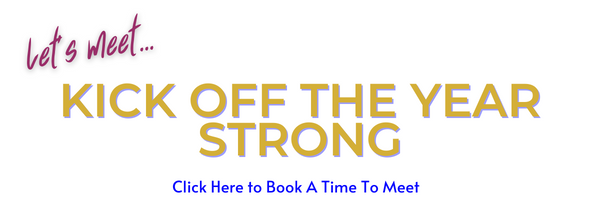So much of the buyer’s journey is complete before they even reach out to your agency. There are many statistics out there to back this up. 70% of the buyer’s journey, they say, is complete before a buyer even reaches out to your agency.
That’s why it’s so crucial that you have a solid insurance quote process. That quote process is more than just providing a number to the buyer or prospect.
The insurance quote process must become the beginning or the start of the customer journey, or, to use the insurance buzzwords, the customer experience.
The past couple of years has forced people worldwide to rethink how they spend their time, who they spend their time with, and what companies they want to do business with. This includes insurance.
Insurance buyers have grown to expect the same simple, seamless, and positive interactions with their insurance as they do with every other aspect of their lives. They have all been spoiled by the Amazons of the world and the speed and effectiveness of online shopping.
If those expectations are not met, they will move on, and move on quickly.
The beginning of this customer experience is customer acquisition. And customer acquisition starts with the quote process.
Customer acquisition in insurance costs nine times more than customer retention. Therefore, we have to nail the insurance quote process. We have to determine the quote experience.
An agent’s ability to provide a quote quickly can win or lose a deal. We must have the perfect quote process for our agency and clients.
If you’ll notice there, I said the perfect quote process for your agency and your clients. The quote process has to be a fit for your agency.
Therefore, you need to examine the technology you have at your agency, the people you have at your agency, and the carriers you have at your agency as you build out the process.
TECHNOLOGY
Let’s talk about raters for just a minute. For years, there’s been a debate about whether personal line raters are effective. For commercial raters, there have been notable improved developments over the last several years.
The age-old argument surrounds the accuracy of the quote. Regardless of the quote’s accuracy, we are looking for speed and efficiency. How?
By using a rater for your quote process, you eliminate duplicate entries. This eliminates wasted hours of data entry and mind-numbing energy. By using personal lines, or commercial lines raters, you can now compete with the speed they’re accustomed to with online, direct-to-consumer quote engines.
The other advantage of using raters is simply filing and storing away data. Win or lose, that data can be in your management system forever. Having that data in your management system can speed up the process on repeat calls from prospects. Simply updating information is much quicker than collecting new information.

PEOPLE
The customer experience and the insurance quote process have so much to do with the staff in your agency. If you have a team full of go-getters, problem solvers, outside-the-box thinkers, and people who are passionate about this customer experience, then the insurance quote process will be that much better.
If you know the mindset and abilities of your staff members and support team, you can address how you can update and improve the quoting process.
CARRIERS
Part of the insurance quote process has to do with the carriers in your agency. This is also a crucial decision to be made in building your agency and your process.
With the right carrier mix, this process can go incredibly smoothly; with the wrong carriers in the mix, this process can be an incredible disaster. Some carriers download, while others do not.
Most carriers work well with raters, while others do not. Oftentimes, each carrier values different data, has different risks, and has a different process than the others. Therefore, it is crucial to pick the right ones for your agency.
Things to look for in a carrier, with regard to the quote process, are ease of doing business, speed, and accuracy, and integration, just to name a few.
IMPLEMENTATION
Gathering Information
When it comes to any process, there have to be several components. This is no different when it comes to creating your ideal quote process.
The first component of the process is building rapport. Building rapport consists of taking the time to introduce yourself and explain why they should do business with you. This needs to be summed up in about a minute and a half of the conversation.
Building rapport consists of fact-finding in a conversational way, looking for common ground, looking for opportunities to build relationships, and building trust. Building rapport must feel like a genuine conversation between two “friends.”
We want this process to be different from any other that they have been through to this point. You must assume that you are one of many quotes they have requested for their insurance needs.
You must seek ways to distinguish yourself from the competition.
The “process” cannot feel like an interrogation or an interview. It most definitely should look and feel like they are doing business with a friend who cares about their specific insurance needs.
People like to do business with those they know, like, and trust. The insurance quote process does not need to feel transactional in any way. This will set your agency’s insurance quote process apart from the competition.
As you build rapport, gather information, and go through Phase 1 of the process, the data you collect should be directly input into the rater and a fillable form, otherwise known as “the quote sheet.”
The insurance quote process should be a combination of speed and accuracy. Direct entry into the rater or the fillable online form enhances your ability to do just that.
This information mustn’t be written on a notepad, then transferred to a management system, then to the raider, then to the carrier system, then presented as a quote.
That is entirely too many duplicate entries with the same information. This may require a little getting used to.
As we say at APP, you may have to slow down to speed up. However, once you have mastered this, it will be a critical component that cannot be skipped.
DELIVERY
Once you have built rapport, gathered the information, and directly entered it into the system, it’s time to deliver the quote. The delivery should be done in a personal, live, one-on-one situation.
This could be done on the phone, via video call, or even in person. You have to remember that you are a professional. You are the one who holds the insurance license. You will need to explain the coverages, answer questions, and walk them through the quotes in a personalized manner.
This doesn’t have to be a long conversation. Rather than simply emailing the section, it should always be explained in this manner.
You have to assume that if you email “blindly,” they will have questions and not fully understand. They will open the email, skip all the necessary information, and go straight to the price. If your price is competitive, you must assume they will take your quotes and forward them to their incumbent agent to match.
The average buyer may think that they know what they need. They may think what they have currently is enough coverage.
The average consumer has been trained by TV ads, social media, and poor representations of what insurance should look like. The average buyer has been trained to shop on price.
The average buyer has been conditioned to believe that insurance is just a commodity to be transacted, not protection for what matters most.
Your job in this quote process is to change that narrative and educate your prospect on the importance of proper coverage. Your job is to inform the buyer about ranges that fit their needs, the correct amount of coverage, and the right deductible for their budget.
Finally, the goal of this process is to educate the buyer on why you chose the range you did to quote them.
Doing this on a phone call or even a Zoom call also gives you another opportunity to build rapport. This allows you to answer questions and build trust by showing your value as an independent agent.
Quoting the prospect over the phone also allows you to retain the “power” of leverage in the process. You have something of value to them. They called you to get a quote for their insurance. They were referred to you to get a quote for their insurance. You hold the power.
The moment you send an email with that quote without having a conversation first, you relinquish that power. You forfeit your leverage in the process. You become nothing more than an order taker. You want to be known as an insurance professional who adds value to the industry rather than just conducting transactions.

FOLLOW UP
In a perfect world, your prospect will go through this process, have minimal questions, and be able to close the deal right then and there on the phone or video call.
However, we all know we don’t live in a perfect world. Would it be nice if they were true? Is that an ideal world for our perfect insurance quote process? That will happen repeatedly and more often the longer you implement this process.
However, we must be prepared for the times when it doesn’t. Usually, the process will require follow-up. Often, the prospect is shopping with multiple carriers, multiple agencies, or even multiple options.
You can set yourself apart and complete this process in two simple words: follow up.
PROSPECTING STATS
- 80% of sales require five (5) follow-ups
- 44% of salespeople give up after one (1) “no”
- 92% of salespeople give up after four (4) “no’s”
Given that the average consumer may require up to five follow-ups and that the competition gives up after two, those who are committed to the follow-up have an advantage. The follow-up process should be consistent across the board.
The follow-up process should also be varied, as should its execution. The process must not only consist of email. Emails, phone calls, and possibly even text messages should vary.
There should always be agreed-upon expectations throughout the process, and follow-up should be included. When setting the rules of engagement, you should always be transparent in the process, letting them know when you will deliver the quote, how you will deliver it, and how you will follow up.
Once these expectations are agreed upon and accepted, there will be no supposed feeling of being “pressured” or “bothered” by your follow-up. Instead, the prospect will respect and appreciate the effort to earn their trust and, therefore, their business in the process.
As an agency, you must decide on your follow-up process. The number of attempts to follow up is crucial. Based on statistics, we at performance partners recommend at least five follow-ups.
How you attempt to follow up is also important to establishing an agency. Some agencies rely on email and phone alone, while others feel comfortable adding another layer of follow-up by utilizing a text feature. Some agencies feel strongly about using social media as a form of follow-up.
These are all things to be discussed when establishing your follow-up process. The sample process that we recommend is:
- Day 1: Follow up with a phone call. 2-3 hours after quote delivery
- Day 3: Follow up with an email or phone call.
- Day 5: Follow up with a phone call.
- Day 10: Follow up with an email with the subject line, “4th attempt” or “Final Attempt.”
- Day 14: Send “Break Up” by email or make a breakup phone call; do not be afraid of leaving a voicemail.
DOCUMENT AND CLOSE THE FILE
The final stage of the quote process sounds so simple and easy. However, it’s equally as important as the previous phases and often overlooked or skipped altogether.
At the end of the process, you will either have won the account or gained a future opportunity to win later. In either case, documentation is crucial.
You may get ghosted even after you go through your strict follow-up process. If that is the case, you must have a method to close that file. We call it the breakup.
The breakup could be done via email or phone call. The separation lets the prospect know you are closing their file due to a lack of interest or follow-through on their behalf.
The breakup lets the prospect know that your time is necessary and that you value your time. You can use the breakup to leave the door open for future follow-up.
This must be documented in your system immediately. There must be a notation in the prospect’s file indicating the result of your actions. If you still need to place this account this year, there should be a task to follow up on for next year.
It is prudent that you document why you did not earn the account this year and what to look for next year.
In a successful situation, where all parties agree to the terms and your agency wins the account, there must also be intentional documentation.
There must be information in the file about billing, accurate information for all policies, mortgagee information, additional insureds, declarations of coverage, and anything else pertinent to the file that must be accurately documented. This is a safeguard for both yourself and the agency.




